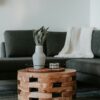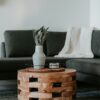Have you ever wondered what makes mid-century modern coffee tables so timeless and captivating? These iconic pieces seem to capture the essence of an era while remaining relevant in contemporary design. With their sleek lines, gentle organic curves, and minimalist aesthetic, mid-century modern coffee tables have been a staple in both vintage and modern homes for decades. Let’s explore what makes these tables so special and how they might add a touch of elegance to your living space.
The Origins of Mid-Century Modern Design
The mid-century modern design movement emerged in the mid-20th century, roughly from the 1940s to the 1960s. This era heralded a unique style characterized by simplicity, functionality, and a connection to nature. Influenced by the Bauhaus movement and Scandinavian design principles, mid-century modern works sought to break away from the opulence of previous styles and embrace a more practical, yet aesthetically pleasing approach.
Key Influencers in the Movement
Several designers were pivotal in the mid-century modern movement. Names like Charles and Ray Eames, Arne Jacobsen, and Isamu Noguchi brought forth revolutionary designs that are still celebrated today. Their work transcended mere furniture making, entering the realm of artistry and innovation.
Defining Characteristics
Mid-century modern design is defined by several key elements: clean lines, fusion of organic and geometric forms, and a minimalistic approach to function and ornamentation. Materials such as wood, metal, and glass were commonly used, often highlighting the natural qualities of the materials themselves.
The Role of Coffee Tables in Mid-Century Modern Interiors
Coffee tables play a central role in living room decor, both functionally and aesthetically. During the mid-century, the coffee table became an essential element in creating sociable and functional spaces. It’s a piece that encourages interaction, serves as a focal point, and adds balance to the room.
Functional Aesthetics
While functionality was paramount, mid-century modern coffee tables also offered aesthetic appeal. The clever blend of materials, from rich woods to sleek metals and tempered glass, made these tables versatile enough to fit a variety of settings.
Versatility in Design
One of the many appeals of mid-century modern coffee tables is their versatility. From the oval Noguchi table to the surfboard-like forms inspired by Scandinavian design, these tables can complement a range of interior decor styles, whether you are going for a more traditional feel or a cutting-edge contemporary look.
Materials Used in Mid-Century Modern Coffee Tables
The use of specific materials is a hallmark of mid-century modern design. Each material was carefully chosen to enhance the overall aesthetic and function of the piece.
Natural Woods
Walnut, teak, and rosewood are commonly used woods in mid-century furniture. These woods provided warmth and richness, often left with natural finishes to highlight their beauty.
Glass and Metal Accents
Glass tops and metal legs were also widely utilized during this period. Glass offered transparency and a feeling of openness, essential in creating airy spaces, while metal provided strength and durability.
Innovative Uses
Mid-century designers were not afraid to experiment with new materials and techniques. Plywood and fiberglass were also incorporated into designs, demonstrating the willingness to push boundaries and create something entirely new.
Popular Mid-Century Modern Coffee Table Designs
Certain designs from this era have become iconic and are still popular choices for homeowners and designers alike. Let’s take a look at some of the most celebrated models.
Noguchi Coffee Table
Designed by Isamu Noguchi in 1947, this table is renowned for its unique organic shape. It consists of a freeform glass top laid over two interlocking wooden legs. The Noguchi table embodies the balance and harmony central to mid-century design.
The Eames Elliptical Table
Also known as the “surfboard table,” the elliptical table designed by Charles and Ray Eames is a long, low table with a minimalist metal base. Its length and shape make it perfect for larger seating arrangements.
Florence Knoll Rectangular Coffee Table
Florence Knoll’s designs were known for their clean lines and functional elegance. Her coffee tables often feature strong geometrical shapes, with metal legs and wooden or laminate tops.
The Tulip Table
Although it’s a dining table design that receives most of the attention, Eero Saarinen’s tulip base concept was also translated into smaller coffee tables, known for their single, pedestal-like base.
How to Incorporate Mid-Century Modern Coffee Tables into Your Space
Introducing a mid-century modern coffee table into your home can create a striking center point in your living space. Here are a few tips on how to make these pieces work harmoniously with your existing decor.
Blending with Other Styles
One of the main advantages of mid-century modern coffee tables is their ability to meld with various styles. Whether your home is eclectic, minimalist, or bohemian, these tables can add a layer of sophistication and history. Consider pairing with complementary furniture, such as a Scandinavian sofa or a vintage rug, to create cohesion.
Emphasizing Space and Flow
These tables often have lower profiles and smaller footprints, which can make a room feel more open. By keeping the surrounding area uncluttered, you allow the table’s design to shine, emphasizing the flow of the room.
Color and Material Coordination
Pay attention to colors and materials in your room. If you have rich wooden floors, a walnut coffee table could mirror and enhance this element. Alternatively, if your room has a lot of metal or glass accents, a table with similar materials can tie the space together.
Practical Considerations When Purchasing a Mid-Century Modern Coffee Table
Before purchasing a mid-century modern coffee table, there are practical factors to consider that will ensure your choice is both functional and aesthetically pleasing.
Size and Proportion
The size of the coffee table should be proportionate to the seating arrangement. Ideally, the length of the table should be about two-thirds the length of the sofa. Make sure there is enough space around the table for ease of movement.
Durability and Maintenance
Consider the durability of the materials. A glass top might show fingerprints and scratches easily, while a wooden table might require periodic refinishing. Choose a table that fits your lifestyle and is easy to maintain.
Budget Considerations
Original vintage pieces can be expensive, but there are numerous reproductions available that replicate the classic designs. Decide early whether you’re willing to invest in an original piece or if a well-made reproduction will serve your needs.
Appreciating the Everlasting Appeal
The enduring appeal of mid-century modern coffee tables lies in their perfect blend of form and function. These designs have managed to stay relevant through changes in design trends, holding onto a nostalgia that is universally appreciated.
What Keeps Them Timeless
The simplicity and elegance of these tables often defy trends. Their straightforward and clean designs have a timeless quality, making them beloved pieces in both vintage collections and modern homes.
In Cultural and Popular Media
The frequent presence of mid-century pieces in television and film has sparked renewed interest among generations that didn’t directly experience this era. Shows like “Mad Men,” which glorified mid-century style, have played a part in their enduring popularity.
Conclusion: A Stylish Investment
Mid-century modern coffee tables are not merely functional furniture but are pieces of art that bring history, style, and practicality into living spaces. They transcend the ordinary, inviting conversation, nostalgia, and a connection to a significant period in design history. Whether you are a seasoned collector or a newcomer to this style, these tables are a testament to a design movement that continues to influence and inspire.
If you’re considering adding a touch of mid-century charm to your home, a coffee table might just be the perfect starting point. With so many designs to choose from, there’s likely the right table for every taste and budget.









